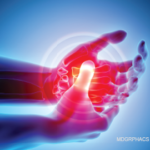In early June, the ACR released an updated guideline on the management of rheumatoid arthritis, which includes new recommendations for specific high-risk groups.1 The guideline includes 44 recommendations—seven of which are strong and 37 conditional. It underscores the role of methotrexate as a cornerstone therapy and emphasizes minimizing glucocorticoids, when possible. Guideline Development Process At…








